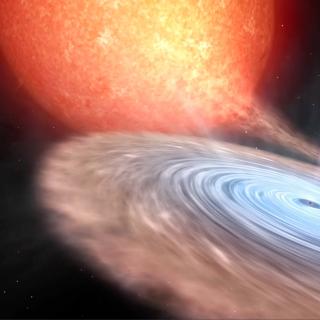Bibcode
Cornelisse, R.; Casares, J.; Charles, P. A.; Steeghs, D.
Bibliographical reference
Monthly Notices of the Royal Astronomical Society, Volume 432, Issue 2, p.1361-1366
Advertised on:
6
2013
Citations
15
Refereed citations
13
Description
Spectroscopy of the low-mass X-ray binary Ser X-1 using the Gran
Telescopio Canarias have revealed a ≃2 h periodic variability that
is present in the three strongest emission lines. We tentatively
interpret this variability as due to orbital motion, making it the first
indication of the orbital period of Ser X-1. Together with the fact that
the emission lines are remarkably narrow, but still resolved, we show
that a main-sequence K dwarf together with a canonical 1.4
M⊙ neutron star gives a good description of the system.
In this scenario, the most likely place for the emission lines to arise
is the accretion disc, instead of a localized region in the binary (such
as the irradiated surface or the stream-impact point), and their
narrowness is due instead to the low inclination (≤10°) of Ser
X-1.
Related projects

Black holes, neutron stars, white dwarfs and their local environment
Accreting black-holes and neutron stars in X-ray binaries provide an ideal laboratory for exploring the physics of compact objects, yielding not only confirmation of the existence of stellar mass black holes via dynamical mass measurements, but also the best opportunity for probing high-gravity environments and the physics of accretion; the most
Montserrat
Armas Padilla